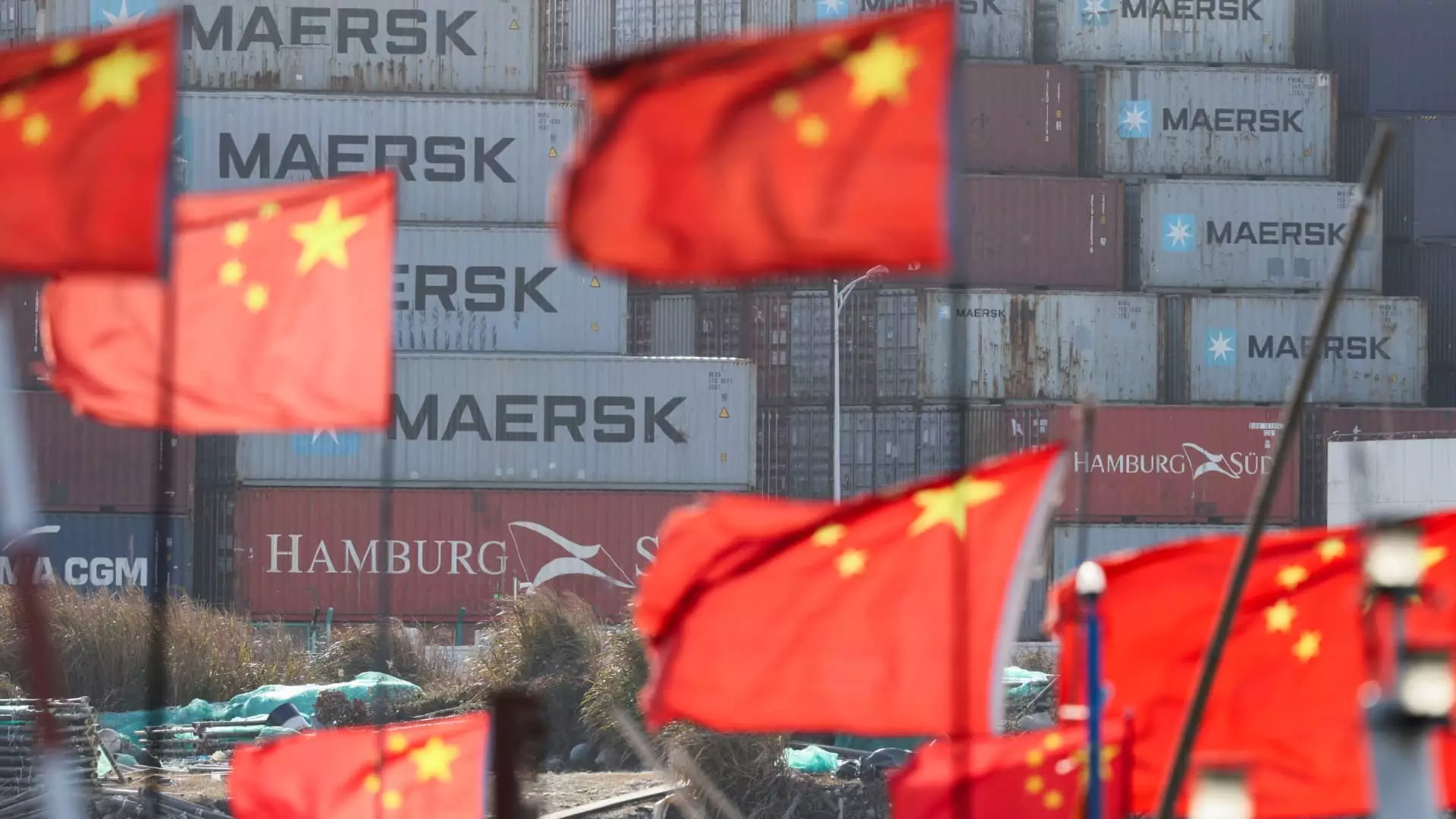Trade relations between the United States and China have reached a pivotal juncture, characterized by aggressive economic tactics that often resemble modern warfare. With the recent announcement of a staggering 34% increase in tariffs by the Trump administration, the implications for both economies are profound and alarming. The Chinese government has been quick to react, signaling a multi-faceted approach that prioritizes domestic growth over retaliation. This strategy not only reflects a keen understanding of the global economic landscape but also highlights the complexities involved in bilateral trade dynamics.
U.S. tariffs on Chinese goods have spiraled to an average effective rate of 54%, crippling many exporters and increasing costs for American consumers. This sharp escalation comes at a time when the potential for global economic recovery remains tenuous. The cascading effects of these tariffs extend beyond China, impacting other nations already grappling with trade uncertainties. Many economists, including those at Goldman Sachs, predict that such measures could reduce China’s real GDP by a significant margin, further straining the already fragile international trade ecosystem.
The Chinese Economic Response: A Tactical Shift
Rather than opting for knee-jerk retaliatory tariffs, which have historically led to a tit-for-tat escalation, analysts indicate that China is likely to focus on robust domestic stimulus measures. This pivot away from aggressive tariffs suggests a calculated reassessment of their economic strategy. Bruce Pang, an economist at CUHK Business School, surmises that China’s emphasis on bolstering domestic consumption and diversifying trade relationships will dominate their response strategy.
Not to be overlooked, is China’s concerted effort to forge stronger ties with other trade partners. With the recent ratification of the Regional Comprehensive Economic Partnership (RCEP), consisting of ten ASEAN nations and other significant economies in the region, China is positioning itself as a cornerstone of trade in Asia and beyond. This alliance not only fortifies China’s economics but also diminishes the effectiveness of U.S. tariffs, as countries within this bloc now consider the collaborative potential that exists outside the purview of American influence.
A Shifting Paradigm: Trade Beyond Borders
Interestingly, rather than viewing U.S. tariffs as an obstacle, many Chinese manufacturers exhibit a certain nonchalance, confident that their neighbors—previously viewed as competitors—will also suffer under similar restrictions. Cameron Johnson, a senior partner at Tidalwave Solutions, emphasizes this shift in perspective, arguing that U.S. policy inadvertently consolidates economic ties between China and regions such as Southeast Asia, which is proving more lucrative than the American market.
Moreover, with a substantial portion of China’s economy still reliant on exports—around 20%—it is imperative for the government to innovate and adapt swiftly. Recent fiscal measures signal a significant change in policy direction, focusing on stabilizing sectors that have seen regulatory tightening in the past. This transformation suggests that China’s leadership is acutely aware of external pressures, willing to embrace pragmatism as they advance toward their growth targets.
The Role of Domestic Consumption in Economic Strategy
An important factor in China’s proposed strategy is the amplification of domestic consumption. Underneath the cloud of tariffs, a nation with a vast population presents untapped potential for economic growth—one that may serve as a buffer against international pressures. By encouraging consumer spending within its own borders, China will be better positioned to mitigate the fallout from export tariff repercussions.
The Chinese government has already initiated numerous stimulus packages aimed at revitalizing consumer confidence, suggesting a notable shift from reliance on exports to a more balanced economic model. While it remains to be seen how effective these measures will be in the long run, this emphasis on internal growth could ultimately redefine China’s economic landscape and lessen its vulnerability to future tariff increases.
Navigating the Landscape of International Trade
China’s strategy is not without its challenges. The volatile nature of international trade, exacerbated by U.S. actions, places immense pressure on its export-driven economy. Future tariffs could emerge as negotiations ebb and flow, yet China must remain steadfast and innovative. It is evident that with every round of tariffs levied, China is likely to strengthen its resolve in both domestic and international contexts.
A critical examination of these developments reveals a fundamental truth: the strategies employed by major economies will define the course of global trade in the years to come. As China endeavors to navigate this evolving landscape, the focus invariably shifts from confrontation to collaboration—an essential evolution amidst the volatility of modern economic warfare.

Leave a Reply